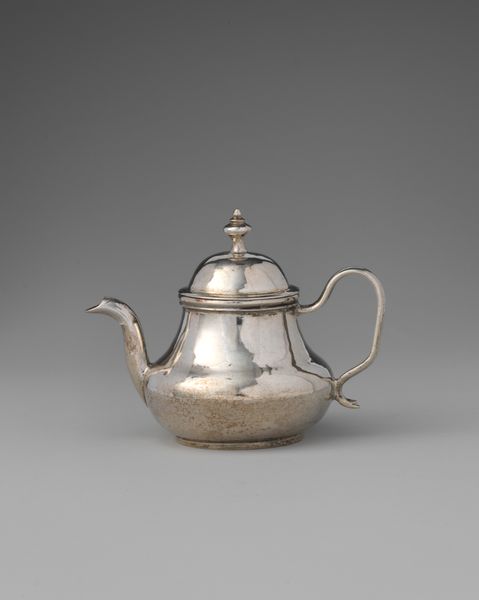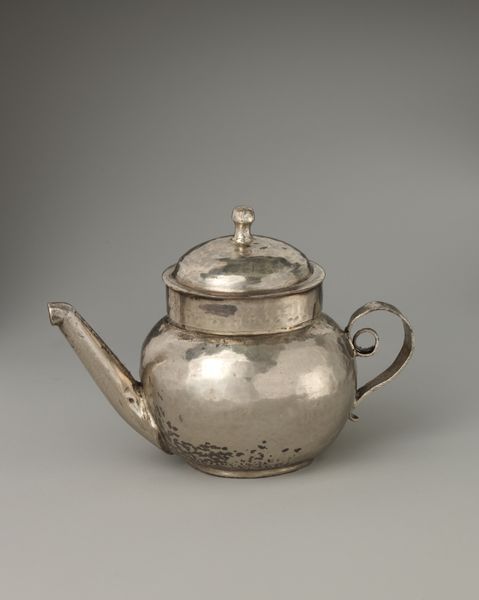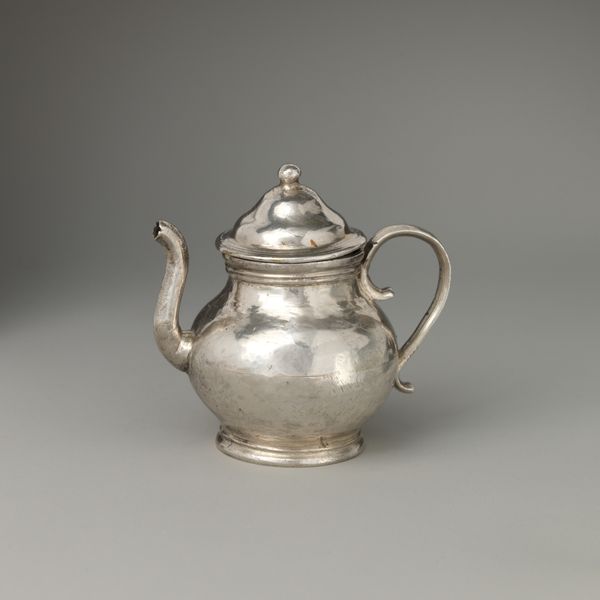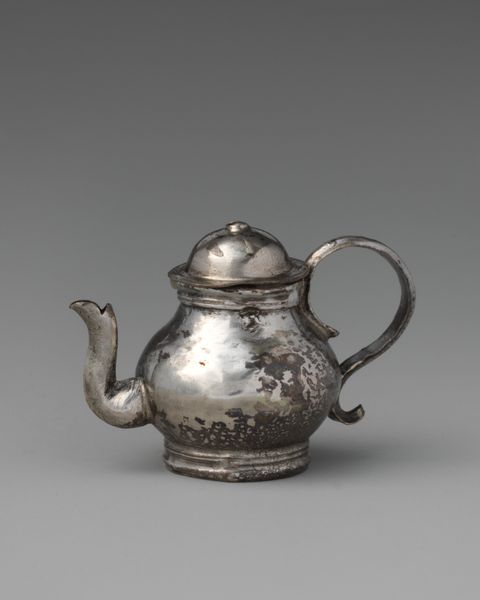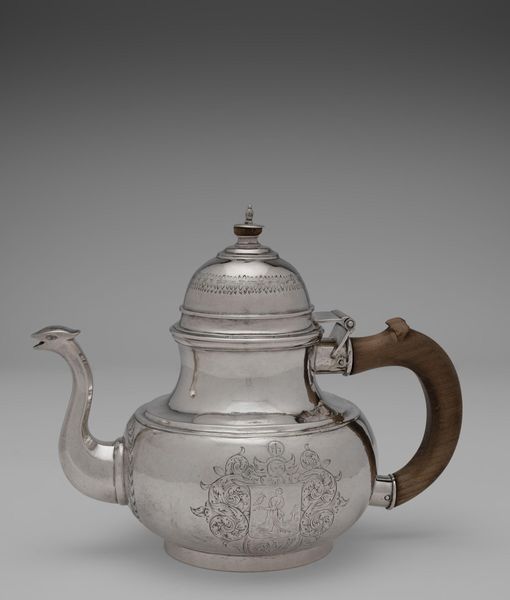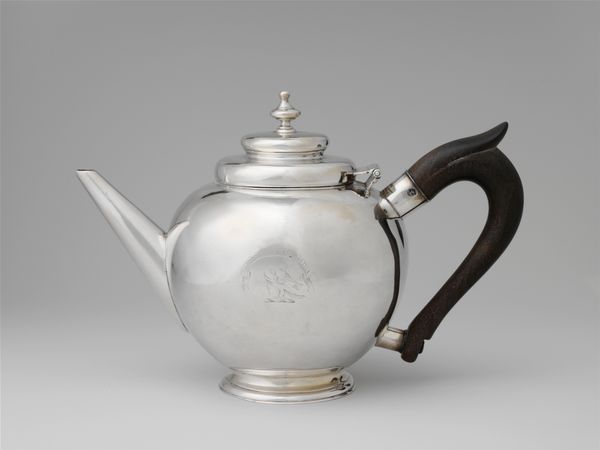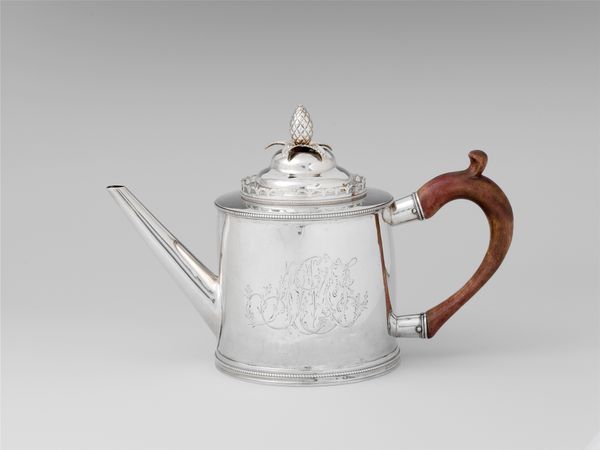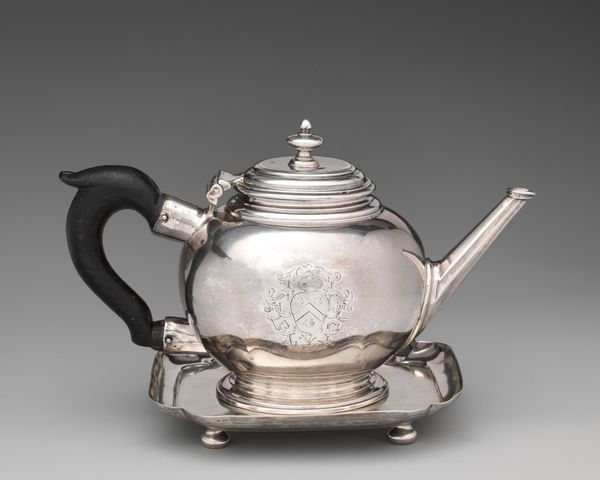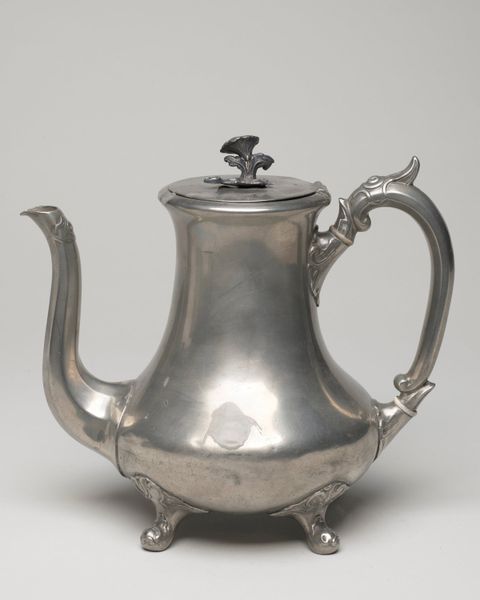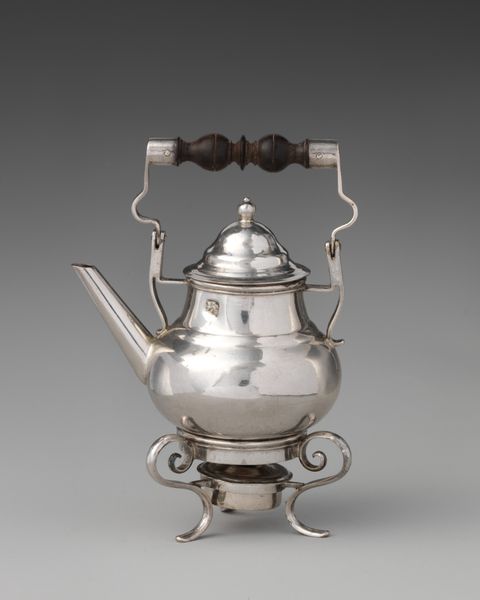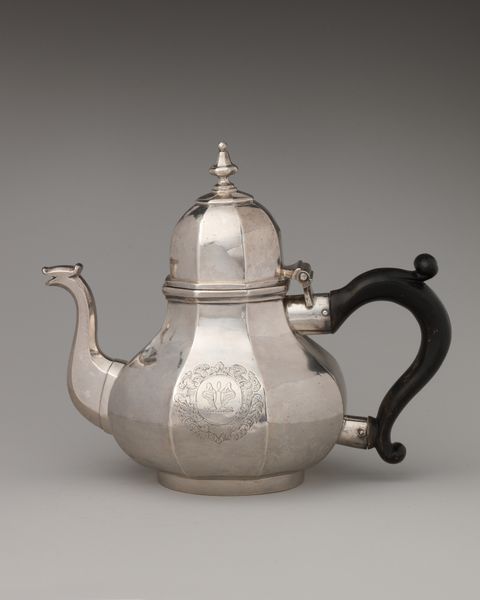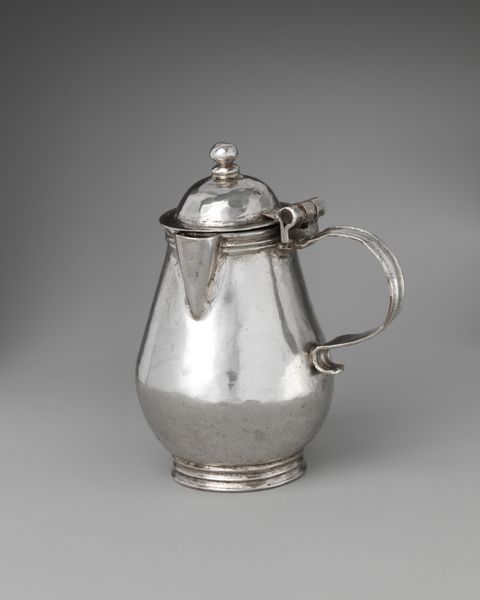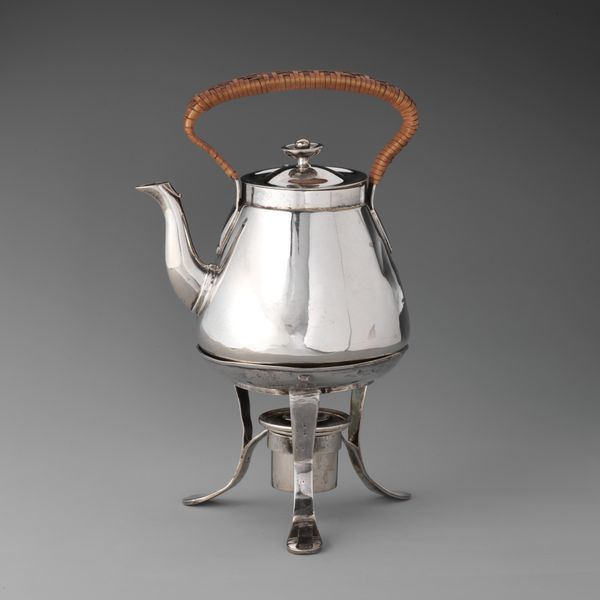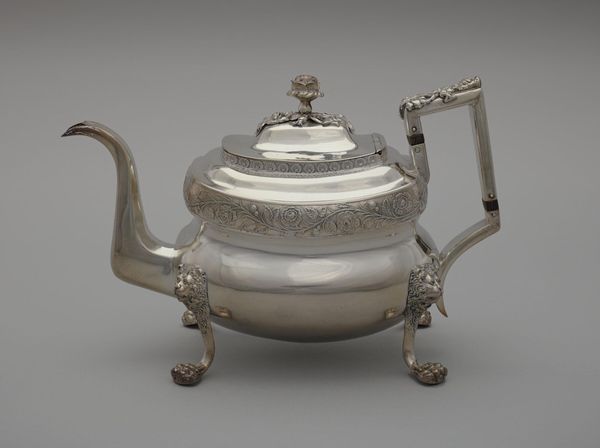
silver, sculpture
#
silver
#
baroque
#
sculpture
#
decorative-art
Dimensions: Height: 2 in. (5.1 cm)
Copyright: Public Domain
Curator: Let's examine this Miniature Teapot with Cover, dating from 1715 to 1735, currently held at the Metropolitan Museum of Art. It’s a baroque silver sculpture. My first impression is how elegant the pure form is. Editor: Indeed, quite striking, especially given the labor involved in crafting such an intricate object. One wonders about the social context that gave rise to such refined pieces. How did the silver originate, who mined it, and how were those artisans treated who formed it? Curator: A pertinent consideration, and yet, note how the artist played with asymmetry and balance. The spout extends with a certain confidence against the curvature of the handle, drawing our eye to a harmonious interplay of concave and convex shapes. Semiotically speaking, we might read this teapot as a signifier of sophisticated rituals. Editor: I find that the decorative flourishes and curves obscure the reality of production. Examining the tool marks, even microscopic, might reveal how the material's worked resistance informed the design itself, pointing towards human input during manufacture, not just the ideal "artistic" form you mention. Curator: Perhaps. But to dwell only on material conditions is to ignore the artistic intention behind the artifact. Look at how light plays across the surfaces, creating delicate nuances that evoke feelings of refinement and aristocratic pleasure. Its form and function speaks to its higher aspirations. Editor: But isn't the teapot's “higher aspiration” directly tied to a system of labor and consumption, which in turn defines its role as a status symbol? Silverware like this tells more about global economies in the 18th century than just the tastes of an elite clientele. Its miniaturization is even more curious, potentially alluding to the vanity inherent in commodity fetishism, with silver’s intrinsic monetary value turned decorative and aesthetic. Curator: Well, even appreciating that, the formal elements and its presence are still captivating in how the craftsman could reconcile that practical function with such high aesthetic quality. Editor: Yes, perhaps it allows us to see craftsmanship as not just skill, but informed response and thoughtful making, given the conditions present at production.
Comments
No comments
Be the first to comment and join the conversation on the ultimate creative platform.
